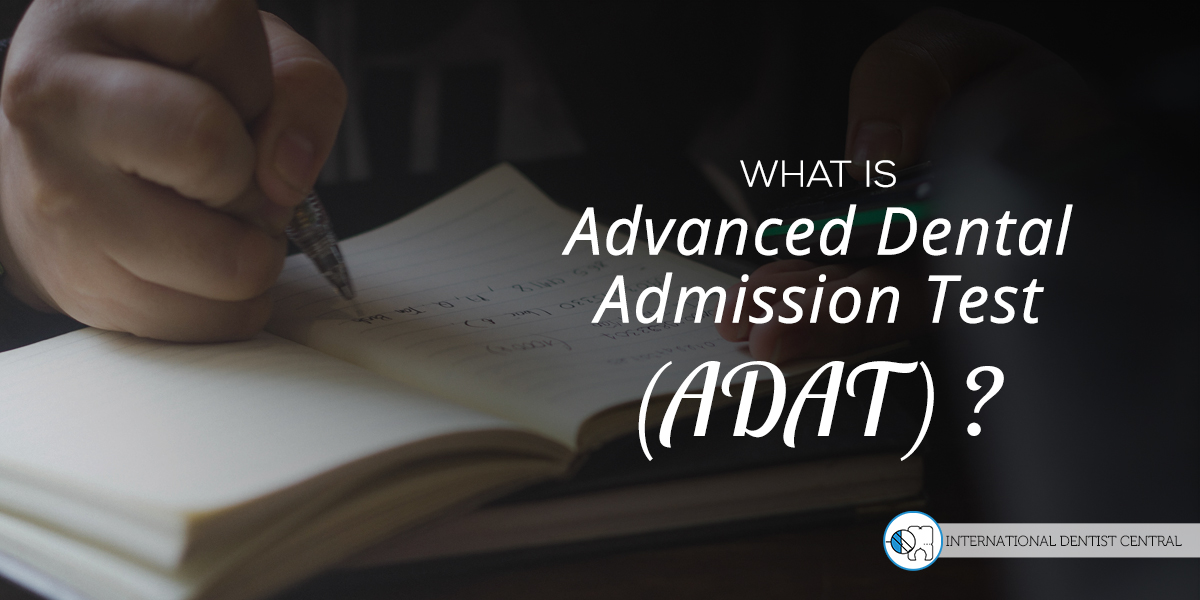The American Dental Association in 2016 introduced the Advanced Dental Admission Test (ADAT) to provide advanced dental education programs with insight into a candidate’s potential success in their program. The ADA launched the ADAT to test dental students, as well as practicing dentists, interested in postgraduate training.

What is ADAT and who should take it?
For international dentists interested in the DDS program, the ADAT is an adjunct and an optional exam which might give a boost to one’s candidacy. Since both parts of the NBDE are pass/fail exams, ADAT could be used as the means to qualitatively compare applicants in an objective manner, because of its scoring system. The intent of the NBDE is testing the minimum required knowledge to be a safe beginning practitioner and gaining license to practice dentistry whereas the ADAT is a tool to aid programs in selecting the best qualified applicants.
The ADAT has a testing window from March to September each year and can be taken at Pearson Vue exam centres in USA, Guam, Puerto Rico, Virgin Islands and Canada.
The ADAT is a standardised objective test in English and includes three areas of test:
- Biomedical Sciences
- Clinical Sciences
- Research Interpretation & Evidence Based Dentistry (Biostatistics)
The portion of biomedical sciences and clinical sciences is mostly similar to the level of the NBDE. The third section of research interpretation and biostatistics is usually the toughest and involves numerical related to research methodology.
There are 200 exam questions in total which are to be completed in duration of 4 hours and 20 minutes (including tutorial, break and post-exam survey). ADAT scores are reported as scaled scores ranging from 200 to 800 and there is no passing or failing score. A score above 500 is usually a good score. There is no negative marking for guessing. The ADAT scores are valid for 2 years. The result is a scaled score for each section with a mean for the total of three sections.
Study Material for ADAT
The best source to study for the Advanced Dental Admission Test is ADAT Knockout which provides mock questions with explanations. For the Biostatics section, First AID for the USMLE Step 1 is a good source.
Third- and fourth-year dental students and practicing dentists interested in post-graduate training (e.g., in a dental specialty area), and international dental students applying to advanced dental education programs or advanced standing in pre-doctoral programs, are encouraged to apply to take the ADAT.
Additionally, it is best to take the ADAT after the NBDE Part 2.
Does taking ADAT have a positive impact on your application?
If a program is accepting Advanced Dental Admission Test scores, seeing a candidate with the initiative and enthusiasm to take such a rigorous exam might distinguish them from a plethora of applicants. Likewise, an applicant who has not taken the ADAT could potentially weaken their application when applying to programs where the exam is being considered.
In the CAAPID cycle of 2019, only University of Michigan mentioned that they would give priority to candidates who have taken ADAT when reviewing their applications.
The ADAT is still in its testing phase, although its future is not really clear at the moment. If you can take it, you should.
Have you taken the Advanced Dental Admission Test ? How has it helped your application? Share your story with us in the comments section below!
Related articles:




Leave A Comment